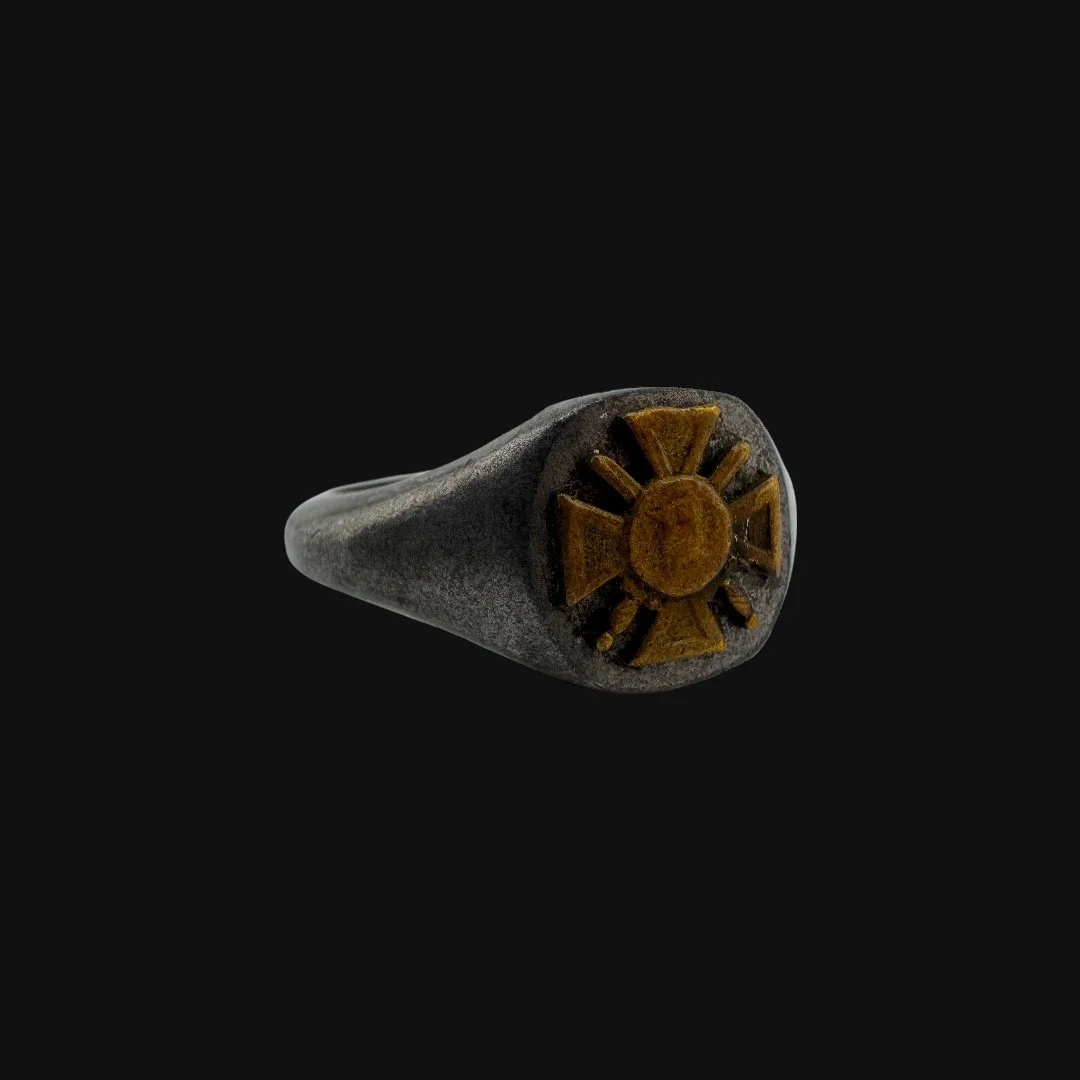 Image 1 of 13
Image 1 of 13

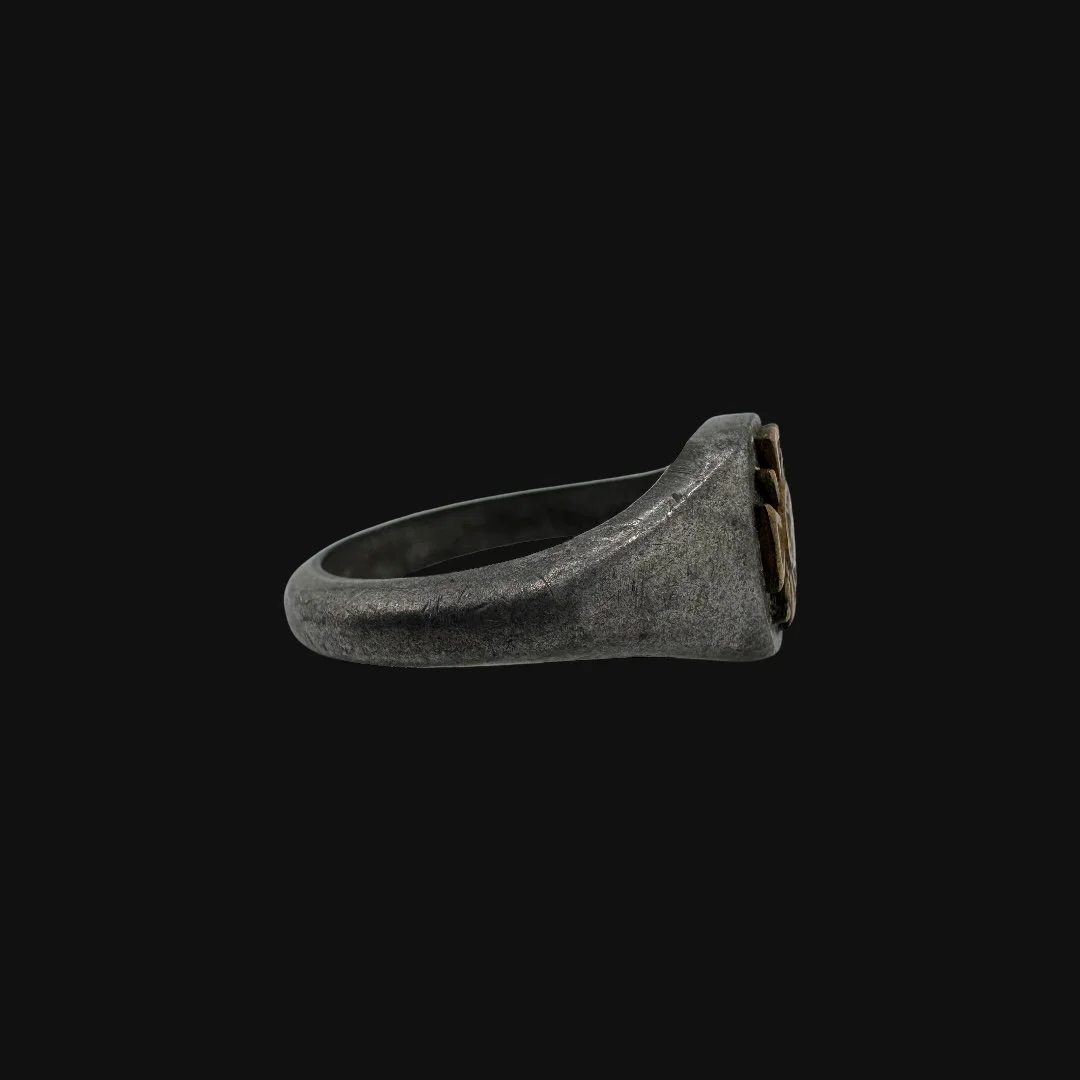 Image 2 of 13
Image 2 of 13

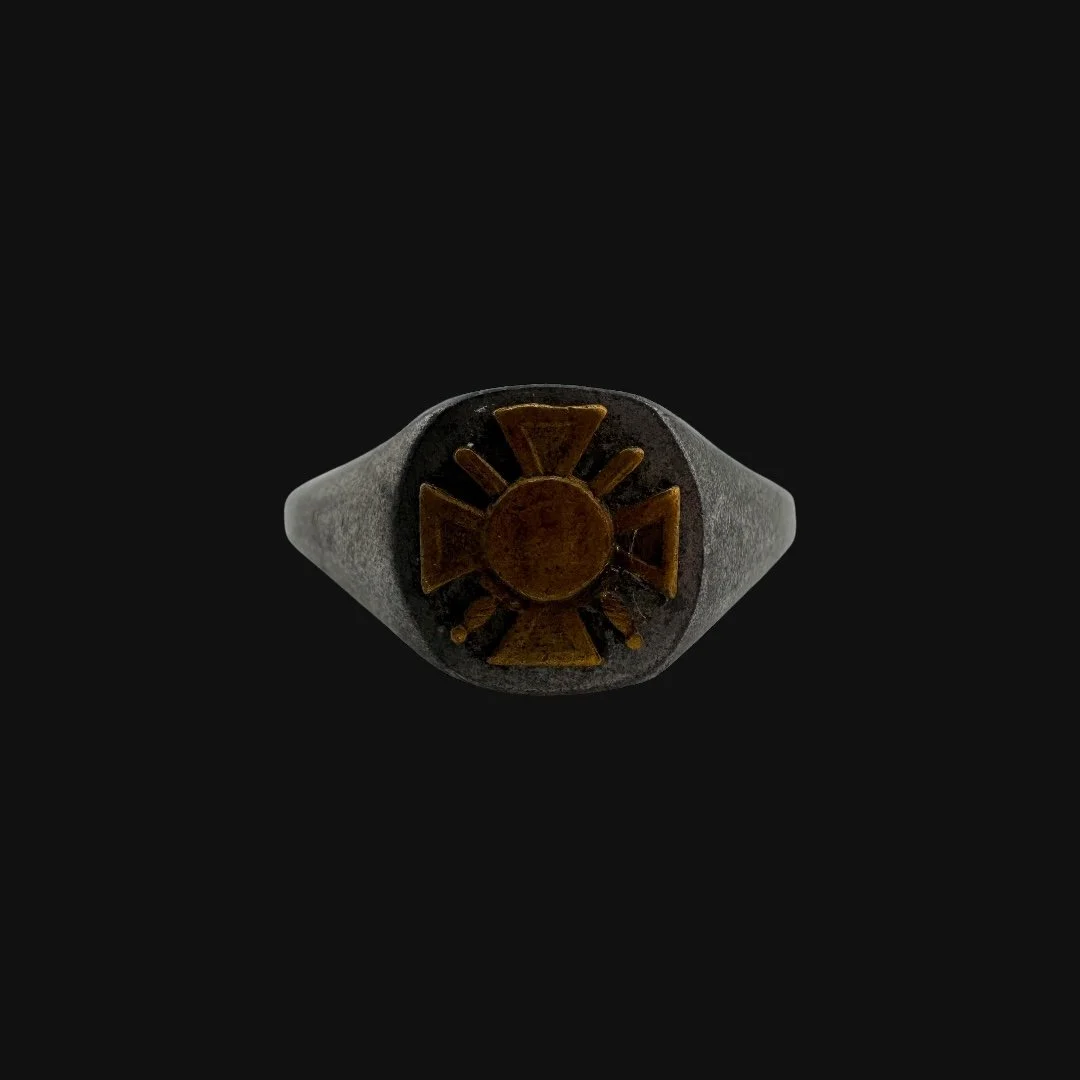 Image 3 of 13
Image 3 of 13

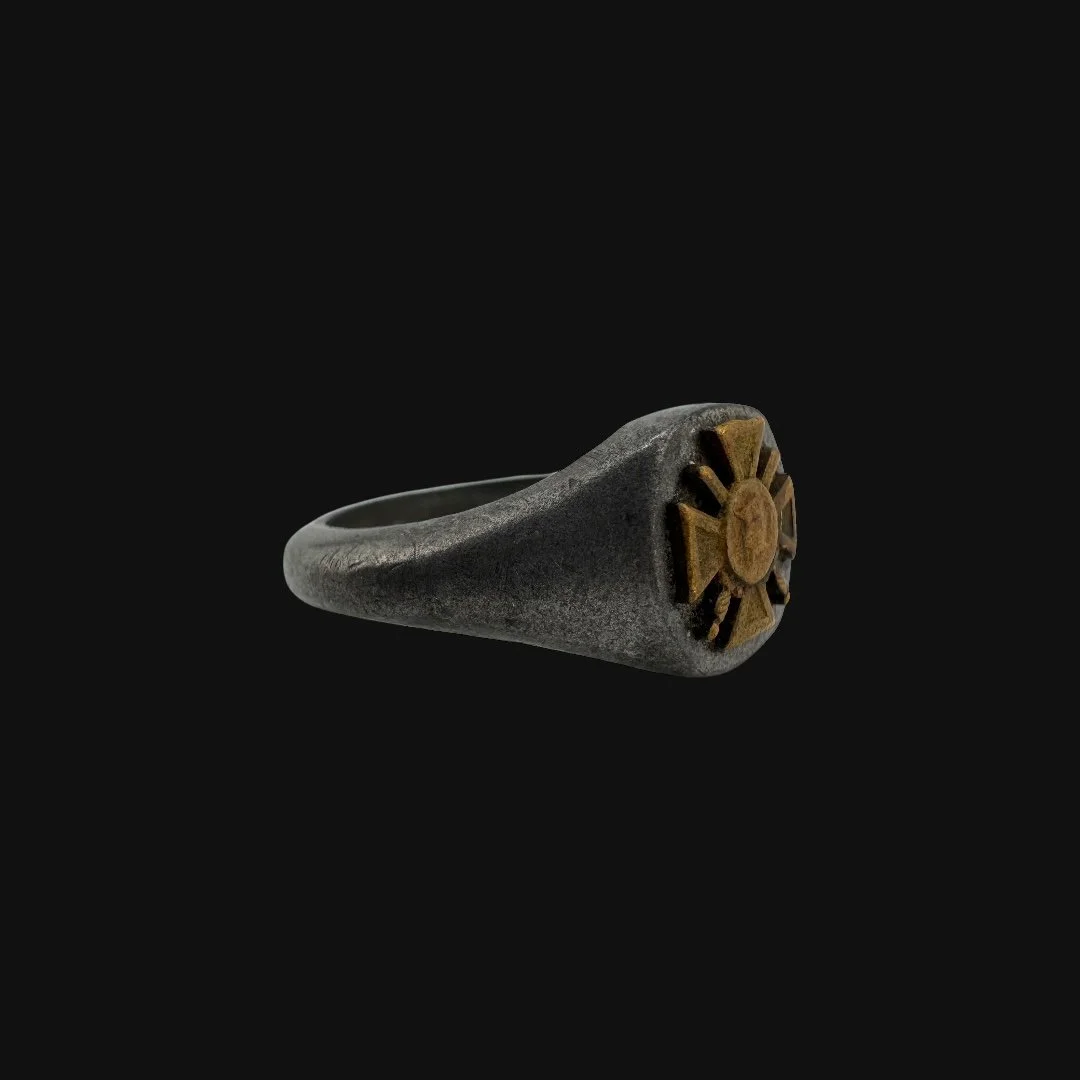 Image 4 of 13
Image 4 of 13

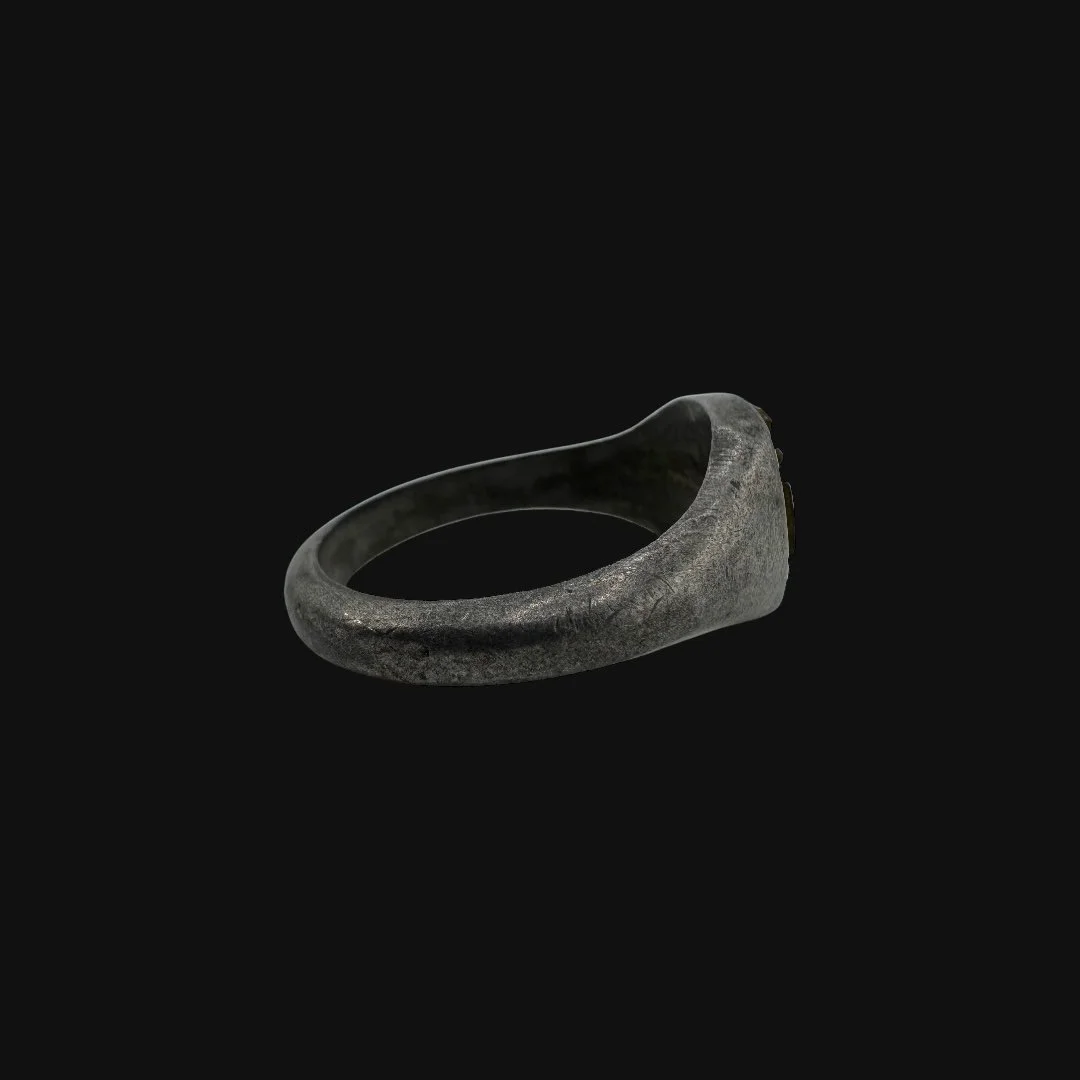 Image 5 of 13
Image 5 of 13

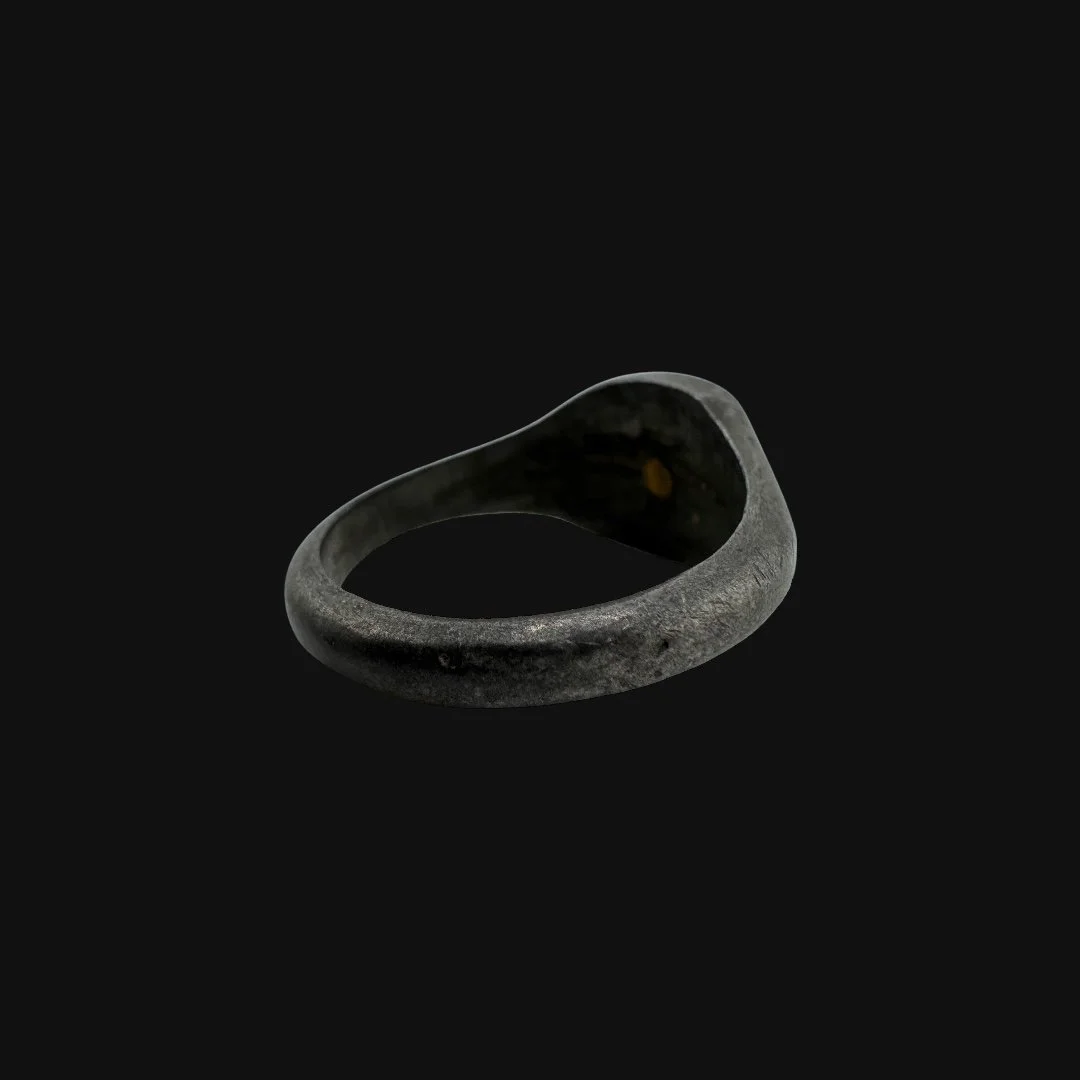 Image 6 of 13
Image 6 of 13

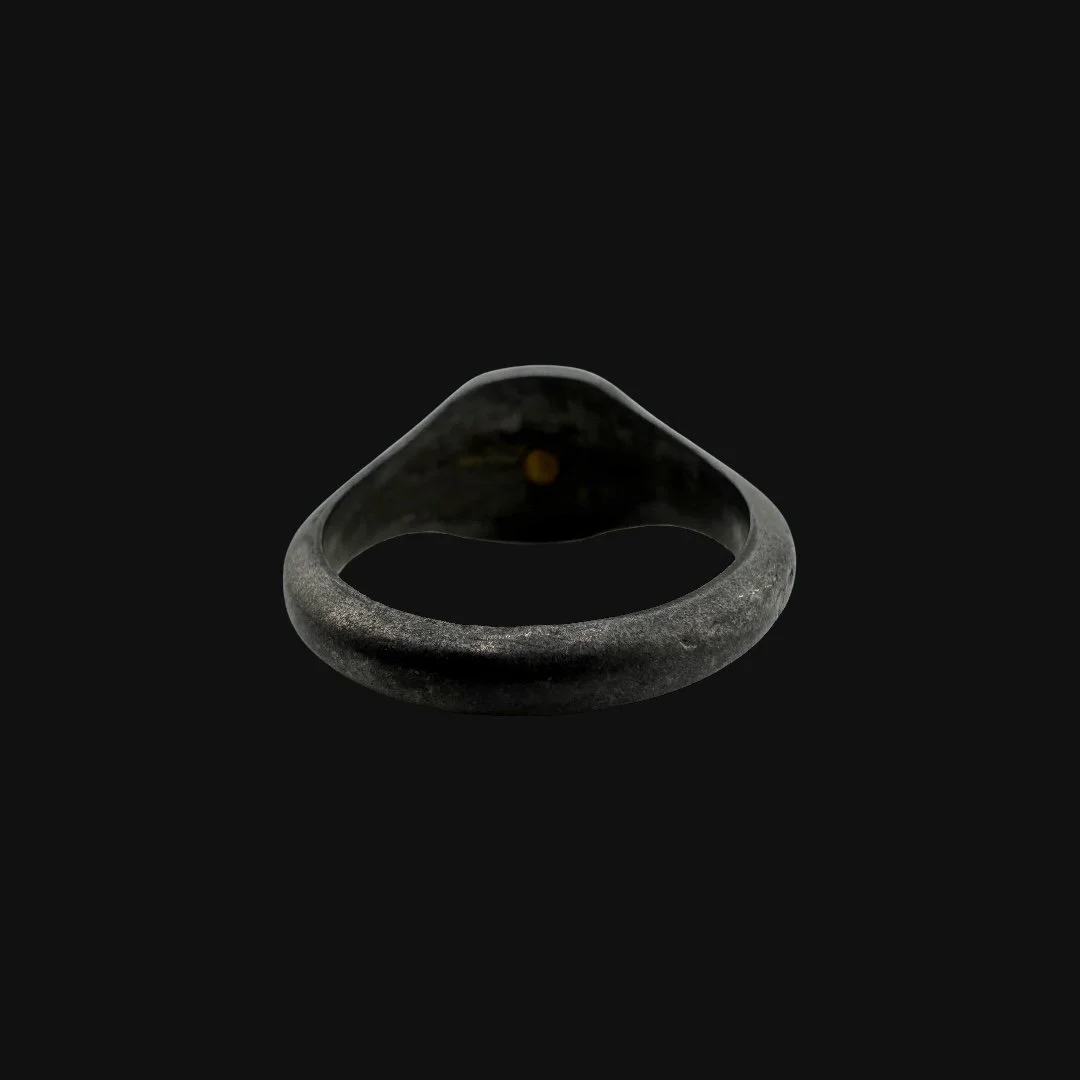 Image 7 of 13
Image 7 of 13

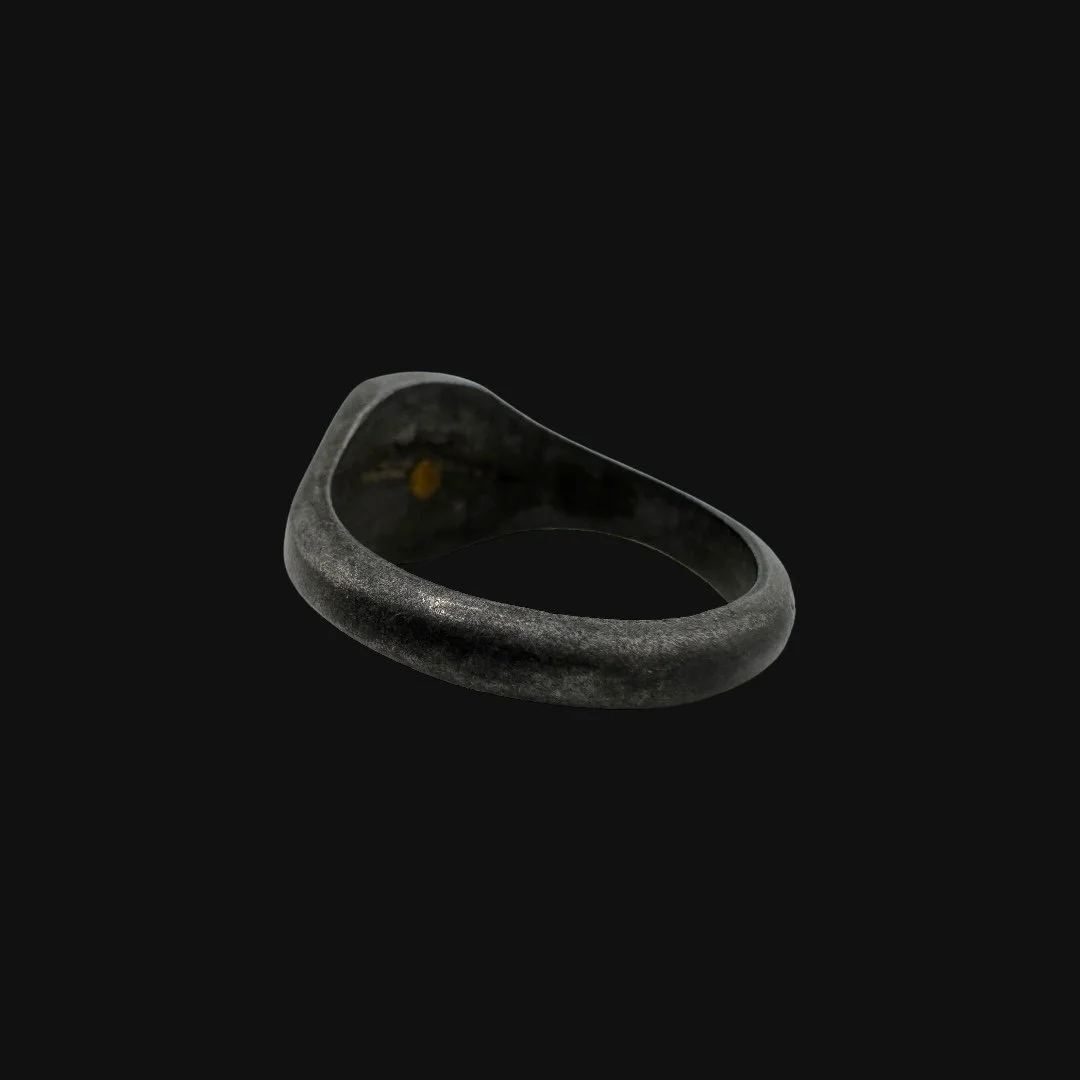 Image 8 of 13
Image 8 of 13

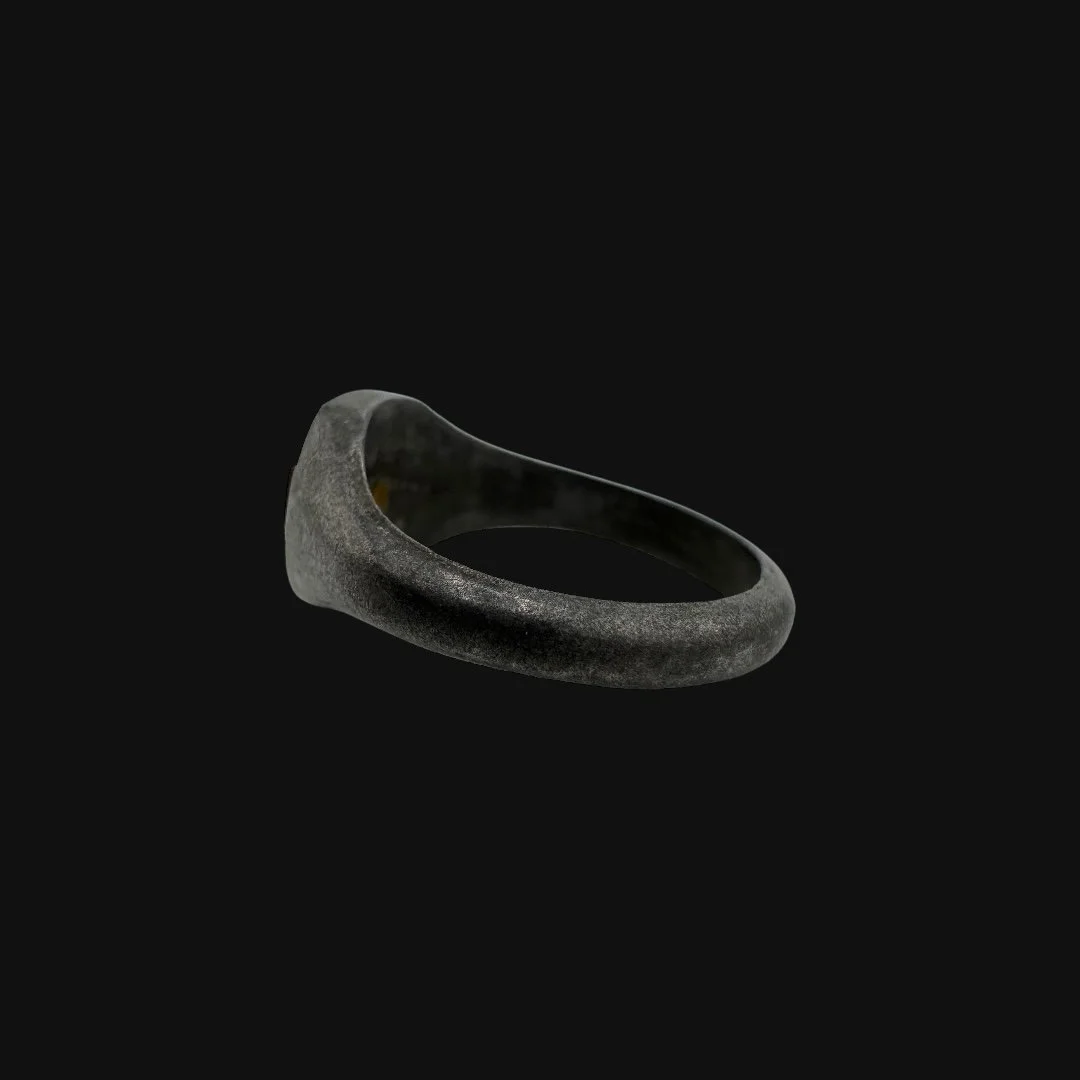 Image 9 of 13
Image 9 of 13

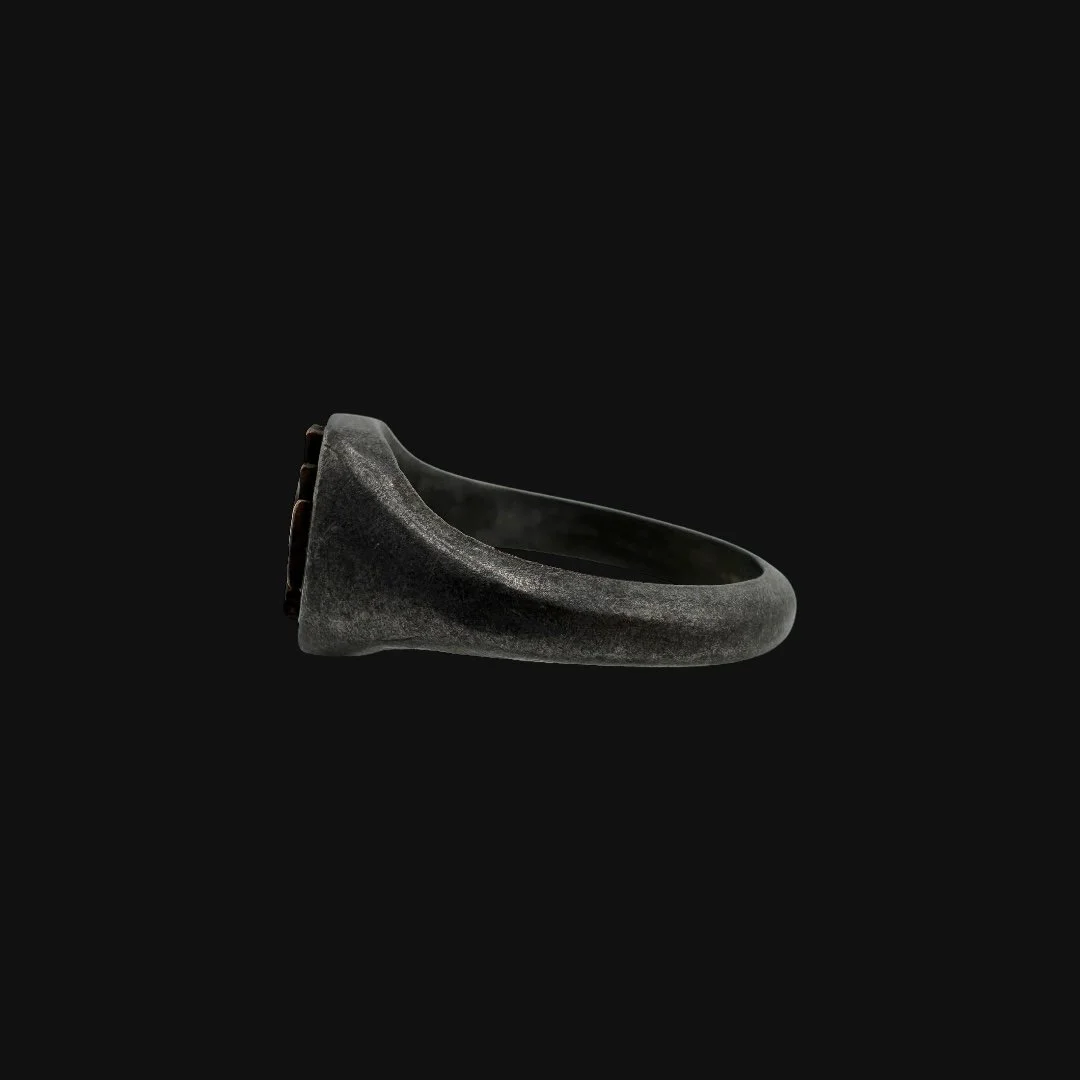 Image 10 of 13
Image 10 of 13

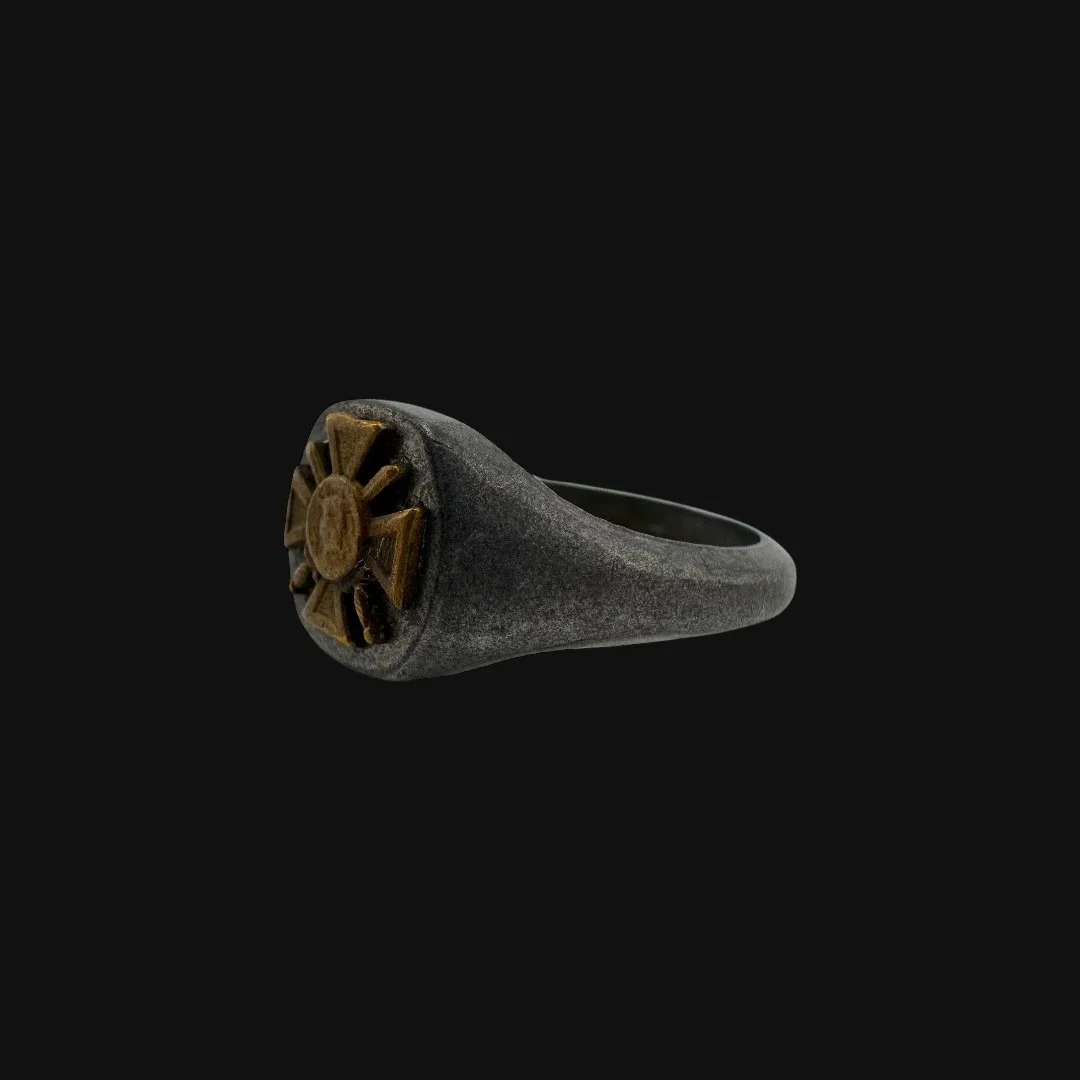 Image 11 of 13
Image 11 of 13

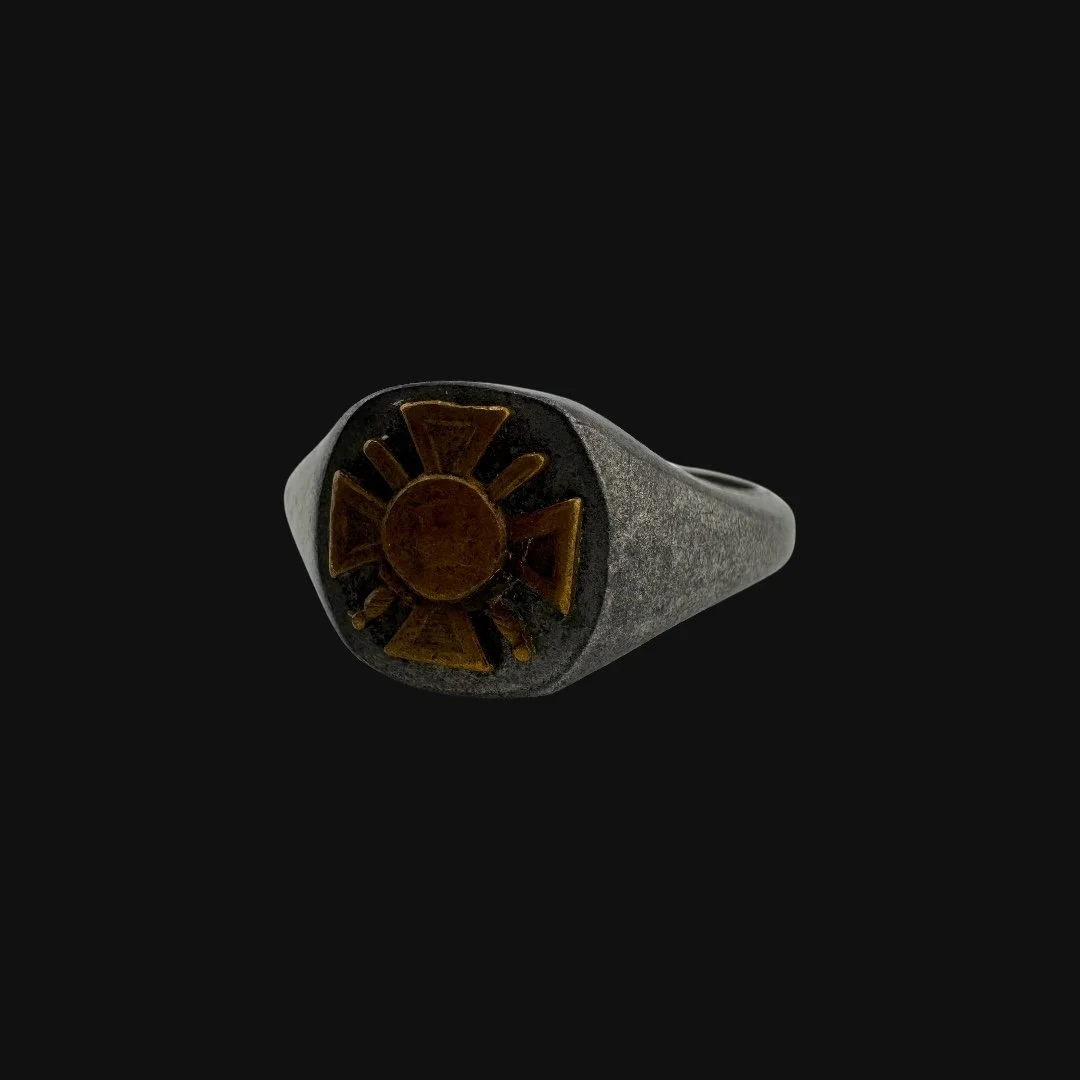 Image 12 of 13
Image 12 of 13

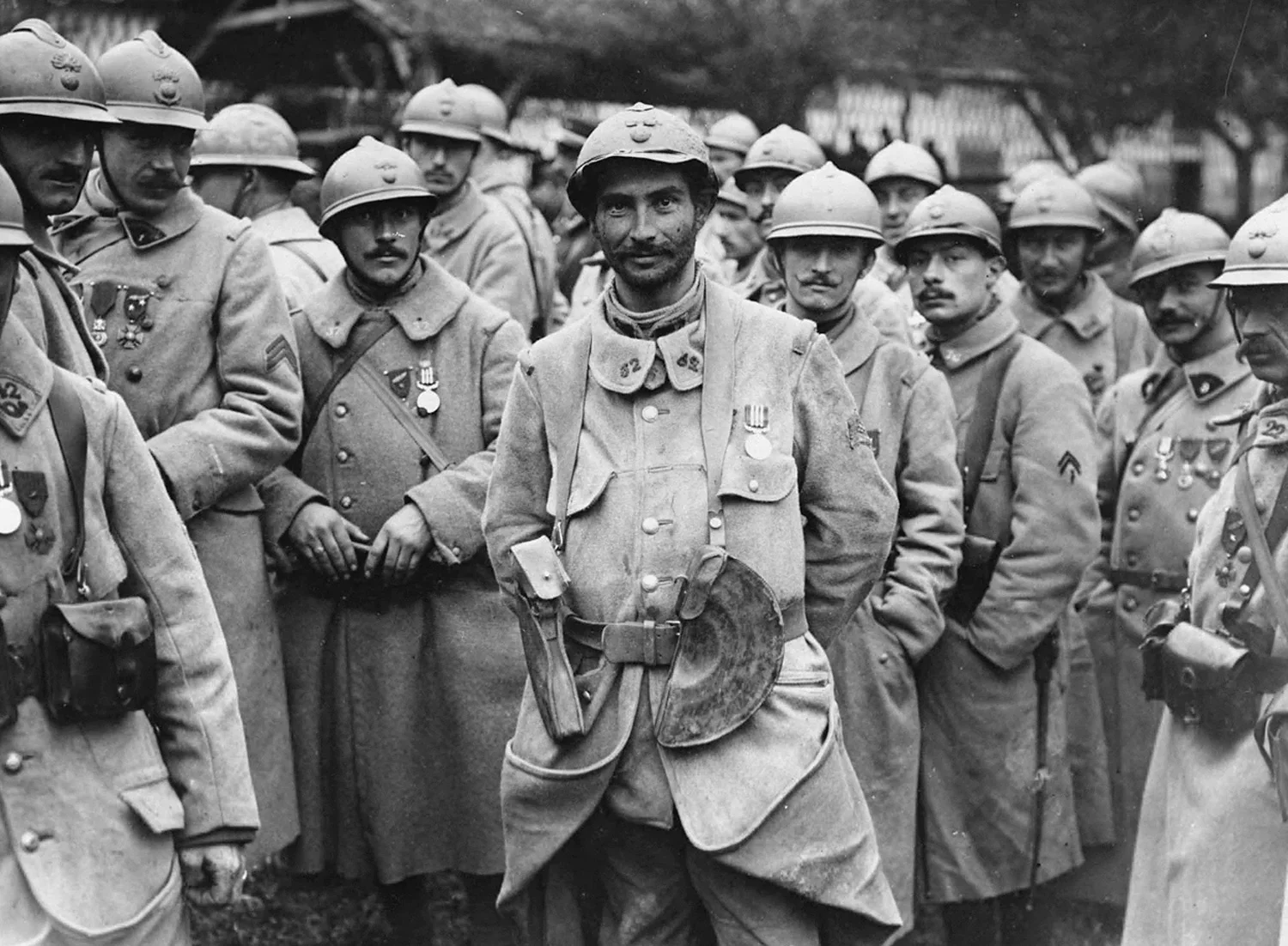 Image 13 of 13
Image 13 of 13














Original WWI "Croix De Guerre" Trench Art Frontline Ring – Soldier Bring Back - Made Using Leftover Battlefield Materials (Size 9.25)
Comes with a hand-signed C.O.A. and a full historical research write-up
From: World War I
Dated: 1914-1918
Ring Size: 9.25 (US)
Material: Battlefield Equipment
Wearable History Collection:
This authentic 1916-1918 WWI-era ring, preserved in its original and unaltered condition, combines exceptional craftsmanship with lasting durability, making it fully suitable for modern wear today. As part of our exclusive World War I “Wearable History Ring Collection,” it offers the rare opportunity to own and wear a genuine piece of World War I handcrafted by soldiers in the trenches from whatever materials they could salvage. Most of these rings were made using metal from downed aircraft, metal from spent artillery shells, strands of barbed wire, and fragments of scorched battlefield debris. Known as trench art, these pieces were shaped with improvised tools during rare moments of respite, often engraved with regimental insignias, battle names, or personal symbols. Each ring bears the marks of war and the artistry of its maker, transforming destruction into beauty. Fully wearable today yet unlike anything modern, every ring is a rare, one-of-a-kind link to the courage, resilience, and stories of the soldiers who fought in the Great War.
Historical Significance of the Croix De Guerre (War Cross) During WWI :
The Croix de guerre 1914–1918 was established on April 8, 1915 to honor acts of bravery during World War I. Unlike older, exclusive orders, it democratized recognition by awarding courage across all ranks, civilians, and even allied troops. The medal is a bronze Maltese cross with crossed swords, bearing the face of Marianne, symbol of the French Republic, and a green-and-black striped ribbon. Devices on the ribbon—stars and palms in bronze, silver, or gilt—indicated the level of citation, from regiment to army command.
It was awarded individually and collectively, with units like the U.S. 42nd “Rainbow” Division and the 369th Infantry Regiment receiving the honor. By 1918, hundreds of thousands had been issued, making it one of the most visible French decorations of the war. To soldiers, it was proof that sacrifice in the trenches was recognized. To allies, it was a gesture of solidarity.
Though widespread, the Croix de guerre retained prestige by embodying shared valor. Its legacy carried into later conflicts, becoming a lasting emblem of courage, remembrance, and the Republic’s commitment to honor all who fought.
The Legacy Within This Ring:
This World War I trench art ring features the Croix de guerre on its face, a powerful symbol of valor and sacrifice in the Great War. Handcrafted from discarded battlefield materials such as shell fragments and wire, it embodies the resourcefulness of soldiers who transformed remnants of war into personal keepsakes. The presence of the Croix de guerre ties the piece directly to the spirit of courage recognized across France and among her allies. More than simple adornment, the ring stands as a tangible reminder of comradeship, survival, and the enduring legacy of those who served on the Western Front.
Comes with a hand-signed C.O.A. and a full historical research write-up
From: World War I
Dated: 1914-1918
Ring Size: 9.25 (US)
Material: Battlefield Equipment
Wearable History Collection:
This authentic 1916-1918 WWI-era ring, preserved in its original and unaltered condition, combines exceptional craftsmanship with lasting durability, making it fully suitable for modern wear today. As part of our exclusive World War I “Wearable History Ring Collection,” it offers the rare opportunity to own and wear a genuine piece of World War I handcrafted by soldiers in the trenches from whatever materials they could salvage. Most of these rings were made using metal from downed aircraft, metal from spent artillery shells, strands of barbed wire, and fragments of scorched battlefield debris. Known as trench art, these pieces were shaped with improvised tools during rare moments of respite, often engraved with regimental insignias, battle names, or personal symbols. Each ring bears the marks of war and the artistry of its maker, transforming destruction into beauty. Fully wearable today yet unlike anything modern, every ring is a rare, one-of-a-kind link to the courage, resilience, and stories of the soldiers who fought in the Great War.
Historical Significance of the Croix De Guerre (War Cross) During WWI :
The Croix de guerre 1914–1918 was established on April 8, 1915 to honor acts of bravery during World War I. Unlike older, exclusive orders, it democratized recognition by awarding courage across all ranks, civilians, and even allied troops. The medal is a bronze Maltese cross with crossed swords, bearing the face of Marianne, symbol of the French Republic, and a green-and-black striped ribbon. Devices on the ribbon—stars and palms in bronze, silver, or gilt—indicated the level of citation, from regiment to army command.
It was awarded individually and collectively, with units like the U.S. 42nd “Rainbow” Division and the 369th Infantry Regiment receiving the honor. By 1918, hundreds of thousands had been issued, making it one of the most visible French decorations of the war. To soldiers, it was proof that sacrifice in the trenches was recognized. To allies, it was a gesture of solidarity.
Though widespread, the Croix de guerre retained prestige by embodying shared valor. Its legacy carried into later conflicts, becoming a lasting emblem of courage, remembrance, and the Republic’s commitment to honor all who fought.
The Legacy Within This Ring:
This World War I trench art ring features the Croix de guerre on its face, a powerful symbol of valor and sacrifice in the Great War. Handcrafted from discarded battlefield materials such as shell fragments and wire, it embodies the resourcefulness of soldiers who transformed remnants of war into personal keepsakes. The presence of the Croix de guerre ties the piece directly to the spirit of courage recognized across France and among her allies. More than simple adornment, the ring stands as a tangible reminder of comradeship, survival, and the enduring legacy of those who served on the Western Front.